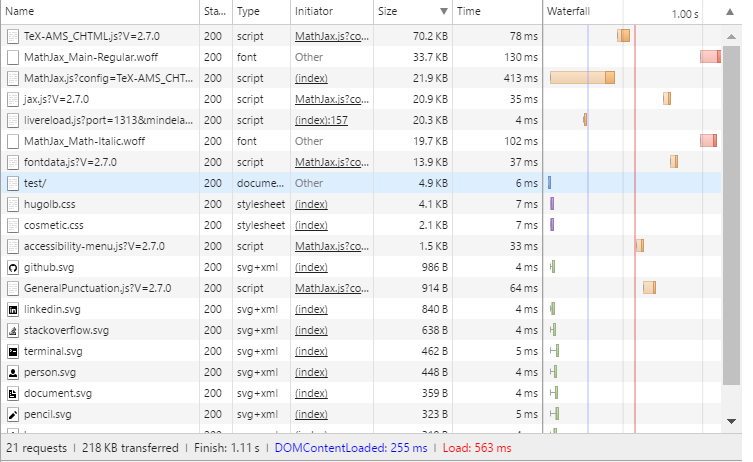Optimizing static sites with hugo
Section: Home / Post
Categories: Developer, Meta, DevOps,
Tags: Hugo, Javascript, Web Development,
According to httparchive the average size of a web page in 2016 was around 2.5MB. Now this may not seem a lot in this age where the internet is the primary media delivery platform - but it is worth noting that most web pages serve text as their primary content. Looking at the report sheds light on what constitutes an average web page:
The HTML content takes up around 50-60kB. Images, understandably, make up the biggest chunk with ~1.6MB. Around another ~200kB are taken up by CSS and Font files. What is surprising to me is that the next biggest chunk, at above 400kB, is JavaScript.

The portion I want to go after is JavaScript. Granted that JavaScript is indispensable to web development. However in excess it can weigh everything down. Particularly in cases when it - instead of CSS - is used to add responsivity to a website. In my experience jQuery is the biggest culprit of unnecessary bloat. But I digress.
While I was building this website using Hugo I realized that I would need additional JavaScript libraries for highlighting code and rendering math. And these libraries take up a ton of space. This:
- Increases the bandwidth cost for the user, and
- Increases loading times which make browsing experience clunky.

Above is network traffic for a page on this site that uses 3rd party JS libraries to render equations. Around 200/218kB of network traffic is for that one library. This may seem a trivial amount of data but I believe that any optimization is good optimization (in production especially). So I harnessed all the flexibility a static site can offer. When I now build my site, only pages that render equations or contain code request external libraries. Thus different pages on my site have different - but the leanest possible - network traffic signatures.
How did I do it? When building sites using Hugo, for each post I can define variables that Hugo can use while rendering a page template into HTML. These variables are called front matter in Hugo-speak. For example, front matter for this page looks like:
| |
And the <head> section for the HTML template looks like this:
| |
So now, only when I set hasequations to true does the page load MathJax. Same with hascode and Highlight.js. This speeds up my load times and frees up the generous CDNs from unnecessary traffic. All it took was a few lines. Win-Win.